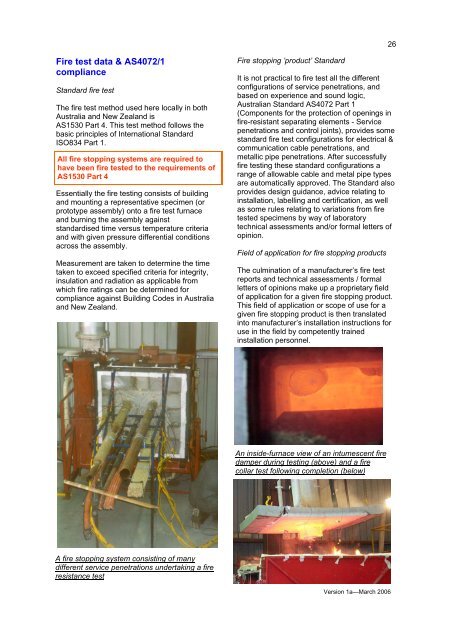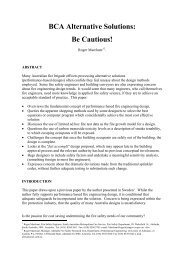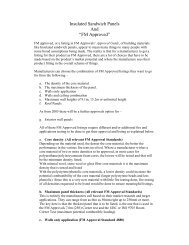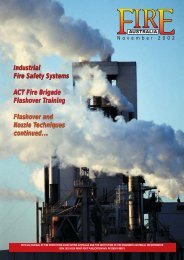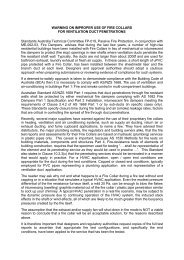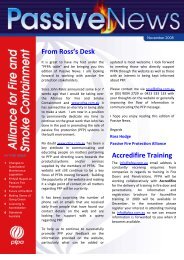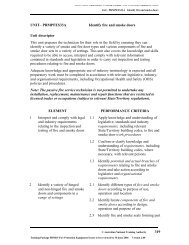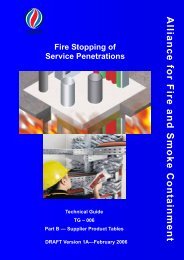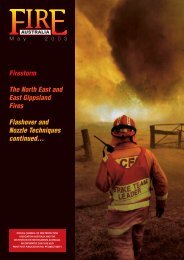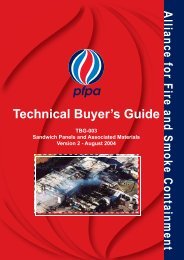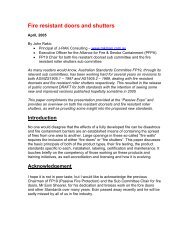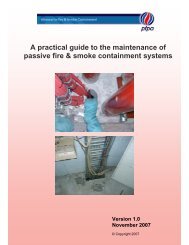Containment
TG - Fire Stopping - Part A.pub - PFPA
TG - Fire Stopping - Part A.pub - PFPA
- No tags were found...
Create successful ePaper yourself
Turn your PDF publications into a flip-book with our unique Google optimized e-Paper software.
26<br />
Fire test data & AS4072/1<br />
compliance<br />
Standard fire test<br />
The fire test method used here locally in both<br />
Australia and New Zealand is<br />
AS1530 Part 4. This test method follows the<br />
basic principles of International Standard<br />
ISO834 Part 1.<br />
All fire stopping systems are required to<br />
have been fire tested to the requirements of<br />
AS1530 Part 4<br />
Essentially the fire testing consists of building<br />
and mounting a representative specimen (or<br />
prototype assembly) onto a fire test furnace<br />
and burning the assembly against<br />
standardised time versus temperature criteria<br />
and with given pressure differential conditions<br />
across the assembly.<br />
Measurement are taken to determine the time<br />
taken to exceed specified criteria for integrity,<br />
insulation and radiation as applicable from<br />
which fire ratings can be determined for<br />
compliance against Building Codes in Australia<br />
and New Zealand.<br />
Fire stopping ’product’ Standard<br />
It is not practical to fire test all the different<br />
configurations of service penetrations, and<br />
based on experience and sound logic,<br />
Australian Standard AS4072 Part 1<br />
(Components for the protection of openings in<br />
fire-resistant separating elements - Service<br />
penetrations and control joints), provides some<br />
standard fire test configurations for electrical &<br />
communication cable penetrations, and<br />
metallic pipe penetrations. After successfully<br />
fire testing these standard configurations a<br />
range of allowable cable and metal pipe types<br />
are automatically approved. The Standard also<br />
provides design guidance, advice relating to<br />
installation, labelling and certification, as well<br />
as some rules relating to variations from fire<br />
tested specimens by way of laboratory<br />
technical assessments and/or formal letters of<br />
opinion.<br />
Field of application for fire stopping products<br />
The culmination of a manufacturer’s fire test<br />
reports and technical assessments / formal<br />
letters of opinions make up a proprietary field<br />
of application for a given fire stopping product.<br />
This field of application or scope of use for a<br />
given fire stopping product is then translated<br />
into manufacturer’s installation instructions for<br />
use in the field by competently trained<br />
installation personnel.<br />
An inside-furnace view of an intumescent fire<br />
damper during testing (above) and a fire<br />
collar test following completion (below)<br />
A fire stopping system consisting of many<br />
different service penetrations undertaking a fire<br />
resistance test<br />
Version 1a—March 2006


